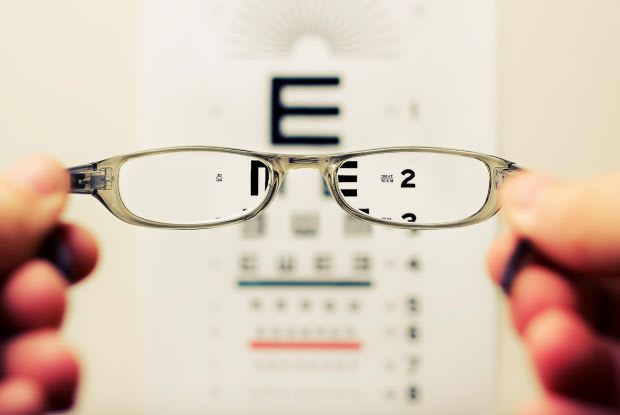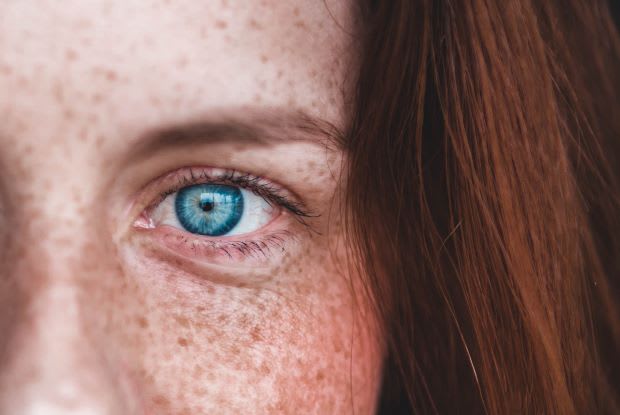Table of Contents
II. Cardiovascular Disorders & Eye Problems
The eyes are delicate organs that require care and consideration throughout a person’s life. Millions of Americans experience low vision and blindness in the United States. Several medications are available to treat cataracts, macular degeneration, and eye allergies.
If you are diagnosed with allergic conjunctivitis, you may be prescribed medications like Zaditor or Patanol eye drops. If you have more serious eye issues, you may begin a treatment of Azopt eye drops for glaucoma or Lotemax eye drops after a macular degeneration laser treatment. [1] But what risk factors increase your chances of developing an eye condition? Read on to learn about four of the most common risk factors.
Age
In the majority of cases, age is the number one risk factor for eye problems. Along with the rest of the body, the eyes age and weaken over time. Vision loss is common as we grow older, and some people can solve these issues with bright lights around the house and frequent checkups.
Doctors recommend getting an eye exam every year, especially if you have a family history of eye disease. Older adults are also more likely to have accompanying disorders like heart problems and diabetes, which you can learn more about below. [2] Along with serious eye disorders like macular degeneration, cataracts, and glaucoma, the following age-related eye problems may occur: Presbyopia: This condition refers to the loss of the ability to see close objects or small print. Presbyopia occurs naturally over a lifetime that you may start noticing after 35 years old. If you have this problem, you may have to read things at arm’s length. You may also notice that your eyes get tired while reading. Reading glasses usually help this problem. Floaters & flashers: Floaters are specks that float across your field of vision. These are normal but can indicate eye issues like retinal detachment. If you begin to notice spots or flashes in your vision, you may want to contact your doctor. Dry eyes: When your tear glands cannot produce enough tears, you may experience dry eyes. They can cause itching, burning, or loss of vision. You may be prescribed eye drops like Restasis to assist in these uncomfortable symptoms. Excessive tearing: This is the opposite of dry eye and involves having too many tears. Excessive tearing may occur when your eyes are exposed to light, wind, or temperature changes. You may want to wear sunglasses to avoid these symptoms. [2] The health of the heart is indicative of the health of the entire body. If the heart is experiencing problems, it can cause serious complications in the body, including eye problems. Cardiovascular disease refers to many heart conditions, including: If you have one or more of these cardiovascular diseases, it can cause decreased blood flow to the eyes and permanently damage the blood vessels from high blood pressure. You may experience the following eye problems with cardiovascular disease: Lost vision from stroke: The National Stroke Association cites two-thirds of people who experience a stroke have vision changes. You may experience a stroke in a part of the brain responsible for vision. This may cause decreased peripheral vision, double vision, and blindness. Retinal artery occlusion: The blood flow to the arteries of the retina may occur if you have heart problems. Built-up cholesterol or blood clots may lead to an eye stroke. You may be experiencing a retinal artery occlusion if you experience floats in your vision and painful pressure in the eye. [4] Diabetes occurs when the blood sugar levels in the body are too high. The body cannot produce enough insulin or cannot use insulin efficiently to process glucose. This causes several complications in the body and may lead to problems with vision over time. Diabetes occurs fairly slowly, and long-term problems include vision blurriness and possible blindness. [5] Diabetic retinopathy is a common but serious complication of diabetes. It can occur in both type 1 and type 2 diabetes. Unregulated sugar levels can block tiny blood vessels to the retina, cutting off its blood supply. Damaged blood vessels can create abnormal vessels in the retina and can leak fluid into the eye. Symptoms of diabetic retinopathy include: Smoking is known to cause several dangerous conditions in the body, but many people do not think about the eyes. If you are a long-term smoker, your quality of vision can decline over time. There are thousands of chemicals within cigarettes, which can cause eye irritation and frequent dry eye. Smoking also constricts your retinal blood vessels, which can increase blood pressure and cause permanent vision loss. Smokers are three to four times more likely to develop age-related macular degeneration (AMD) than non-smokers. Cataracts are also common in heavy smokers who consume 15 or more cigarettes a day. If you smoke and notice vision changes, it is essential to speak with your doctor and cut smoking out of your life. If you do not quit the habit, you may become blind or need shots into your eyes to maintain your vision. [7] The content in this article is intended for informational purposes only. This website does not provide medical advice. In all circumstances, you should always seek the advice of your physician and/or other qualified health professionals(s) for drug, medical condition, or treatment advice. The content provided on this website is not a substitute for professional medical advice, diagnosis, or treatment.
Cardiovascular Disorders & Eye Problems

Diabetes

Smoking
